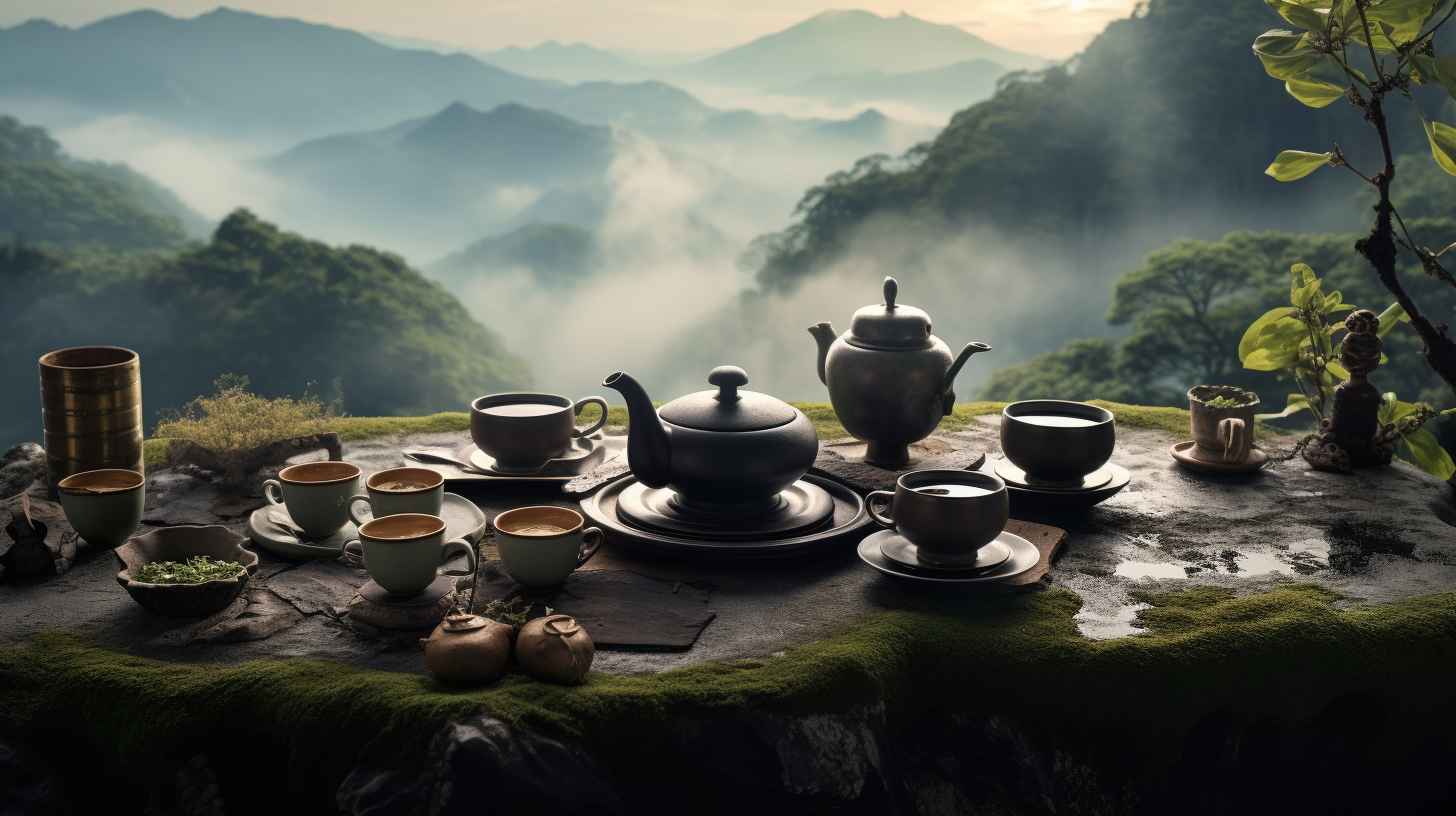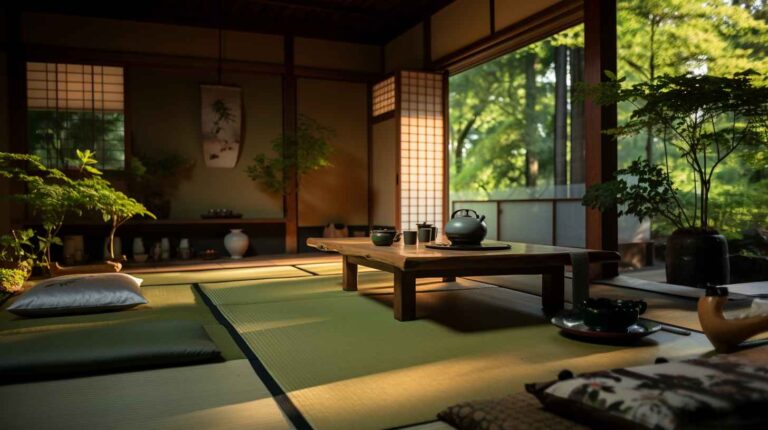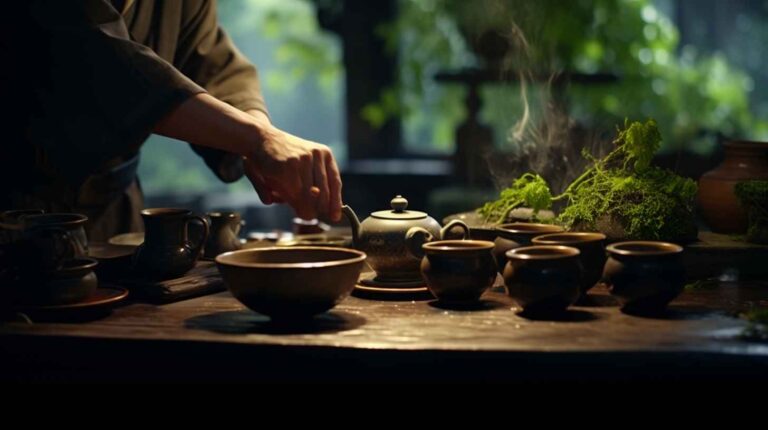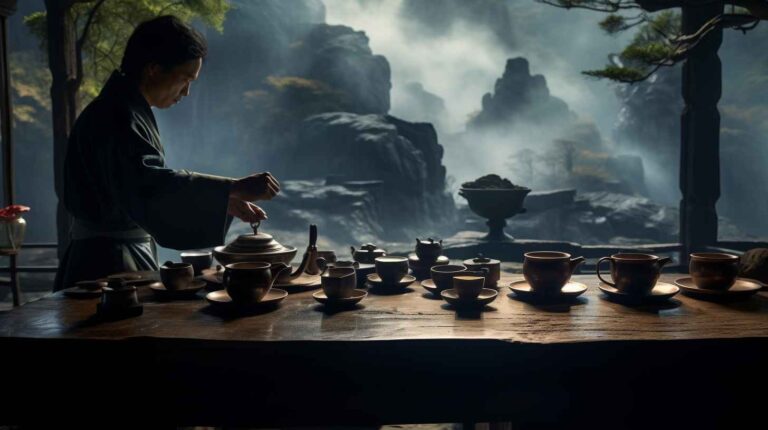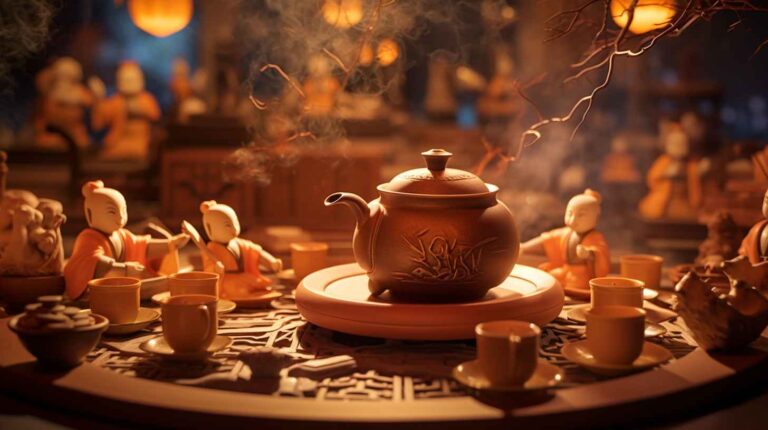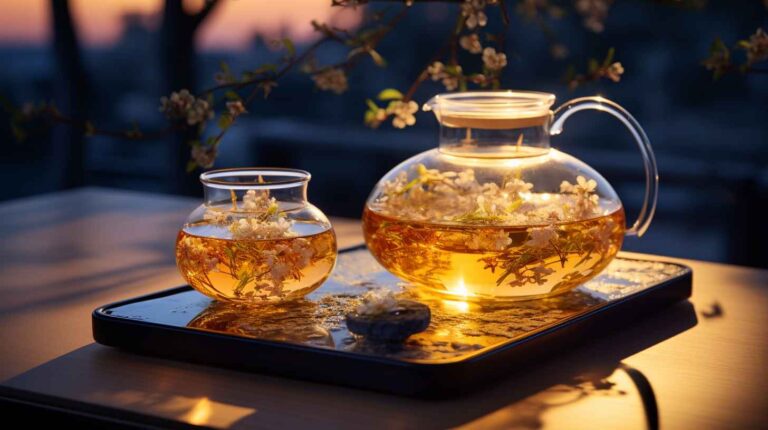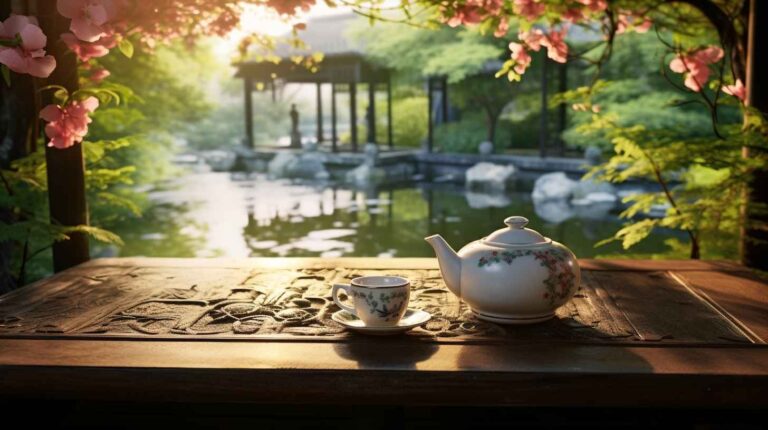Steeped to Perfection: Timing Your Tea for Optimal Flavor
Introduction
Tea, an age-old beverage, has been sipped and celebrated across centuries and continents. From the royal courts of ancient China to the bustling tea houses of modern-day Tokyo, tea has woven its way into the very fabric of human civilization. This universally beloved drink is much more than just a beverage; it represents culture, tradition, and a moment of solace in an ever-busy world. One of the most critical aspects of enjoying tea, which remains unchanged through time, is the steeping process. The balance between time and temperature is paramount. A fleeting moment can be the difference between a perfect cup and an utterly bitter experience. In this comprehensive guide, we’ll explore the delicate dance of steeping tea to achieve the optimal flavor.
Understanding Steeping
At its core, steeping is a simple process. It’s the infusion of tea leaves in water. However, beneath this simplicity lies a complex interplay of chemistry and artistry. When hot water meets tea, a series of reactions occur. The water coaxes out the flavors, aromas, and colors from the leaves, resulting in the beverage we love.
What’s truly fascinating is the composition of tea leaves. Packed with various compounds, including polyphenols, amino acids, and enzymes, each type of tea offers a unique steeping experience. The art of tea brewing is in manipulating these compounds, primarily through time and temperature, to achieve a desired flavor profile.
Why Timing Matters
Flavor Profile: Imagine a symphony. Each instrument plays a role, contributing to the grandeur of the piece. Similarly, each compound in tea contributes to its overall flavor. The duration for which tea is steeped determines which ‘notes’ or flavors become pronounced. A brief steep might highlight the tea’s natural sweetness, while a longer one could emphasize its depth and richness.
Bitterness: A common pitfall in tea brewing is over-steeping, which often results in a bitter taste. This bitterness arises from the over-extraction of tannins, naturally occurring compounds in tea. While tannins contribute to the complexity of tea’s flavor, in excess, they overshadow other delightful nuances.
Strength: Beyond flavor, the steeping time also dictates the strength of your brew. A quick steep results in a light, aromatic tea, whereas a prolonged steep offers a bold, robust flavor, perfect for those who prefer their tea strong.
Nutrient Release: Tea is not just about flavor; it’s a health elixir too. Compounds like catechins, known for their antioxidant properties, vary in their release depending on the steeping duration. To maximize health benefits, it’s essential to steep tea for an optimal period.
The Ideal Steeping Times for Different Teas
Tea, in its many avatars, offers a diverse palette of flavors. From the gentle embrace of white tea to the assertive punch of black, each type demands unique steeping parameters.
1. Green Tea:
Historical Context: Green tea, especially popular in East Asia, has roots that date back thousands of years. Revered for its health benefits, this tea is often associated with meditation and mindfulness.
- Time: 1-3 minutes.
- Temperature: 175°F – 185°F (80°C – 85°C).
- Why: Green tea’s delicate nature requires careful handling. Steeping it too long or at too high a temperature can unleash bitterness, masking its inherent sweetness and umami flavors.
2. Black Tea:
Historical Context: Black tea, with its origins in China, became a staple in the West, leading to iconic blends like English Breakfast and Earl Grey.
- Time: 3-5 minutes.
- Temperature: 200°F – 212°F (93°C – 100°C).
- Why: Fully oxidized, black tea leaves are robust and resilient. They can withstand longer steeping times, which unravel their complex flavors, ranging from malty to fruity.
3. White Tea:
Historical Context: Often reserved for royalty, white tea was a luxury in ancient China. Its minimal processing gives it a delicate flavor.
- Time: 2-5 minutes.
- Temperature: 185°F – 190°F (85°C – 88°C).
- Why: White tea is all about subtlety. A gentle steep extracts its soft, floral notes, ensuring it remains unmarred by bitterness.
4. Oolong Tea:
Historical Context: Oolong, the “black dragon” in Chinese, offers a vast spectrum of flavors, from light and floral to dark and roasted, depending on its oxidation level.
- Time: 3-5 minutes.
- Temperature: 190°F – 200°F (88°C – 93°C).
- Why: This tea’s diversity demands attention. Adjusting the steeping time can help highlight its myriad flavors, whether you’re sipping a lightly oxidized or a heavily roasted variant.
5. Herbal Infusions:
Historical Context: Unlike traditional teas which come from the Camellia sinensis plant, herbal infusions, often referred to as ’tisanes’, encompass a wide variety of plants, herbs, and fruits. From ancient Egyptian chamomile remedies to Native American peppermint brews, these infusions have been consumed globally for their flavors and medicinal properties.
- Time: 5-7 minutes.
- Temperature: 212°F (100°C).
- Why: As these infusions lack actual tea leaves, they often require more time to draw out the full depth of flavors from the chosen herbs, fruits, or flowers. The prolonged steeping allows for a robust and aromatic cup, often caffeine-free, perfect for relaxing moments or bedtime.
6. Pu-erh Tea:
Historical Context: Known for its unique fermentation process, Pu-erh has a storied history in Chinese culture, often being traded along ancient routes and even used as a form of currency.
- Time: 3-7 minutes.
- Temperature: 200°F – 212°F (93°C – 100°C).
- Why: This tea’s intricate fermentation process results in complex flavors that evolve over time. Depending on the age and quality, adjusting the steeping time can enhance its earthy, woody, or even fruity notes.
Tips for Perfect Steeping
Mastering the art of tea steeping goes beyond just timing and temperature. The process involves an intricate understanding of the tea’s origin, quality, and your own personal preferences.
1. Quality Matters: Just as a fine wine starts with high-quality grapes, a perfect tea brew begins with superior tea leaves. Investing in premium, whole leaf tea ensures a flavorful and aromatic infusion.
2. Measure Your Tea: Consistency is key. By measuring your tea, you guarantee a balanced flavor every time you brew. This becomes especially crucial for teas with bolder flavors, where a little can go a long way.
3. Fresh Water is Best: The quality of water used can drastically affect the taste of your tea. Soft water, free from heavy minerals and impurities, is ideal. Remember, tea is mostly water, so its quality is paramount.
4. Watch the Temperature: Each tea type thrives at a specific temperature. While boiling water is suitable for black tea and tisanes, more delicate teas like green and white require cooler water. Consider investing in a variable temperature kettle for precision.
5. Experiment: While guidelines are helpful, personal taste is subjective. Use recommendations as a starting point, and tweak based on your preference. Perhaps you enjoy your green tea slightly stronger or your black tea a tad lighter. Experimentation is the key to finding your perfect brew.
6. Cover While Steeping: This might seem trivial, but it’s a game-changer. By covering your tea while steeping, you maintain a consistent temperature, which is crucial for flavor extraction.
Common Steeping Mistakes
Perfection in any art form comes with understanding common pitfalls. Recognizing and avoiding these mistakes can elevate your tea experience:
1. Using the Wrong Water Temperature: The nuances in tea flavors can be lost if steeped in water that’s too hot or too cold. Delicate teas can become astringent when exposed to boiling water, while robust teas might appear lackluster if the water is too cool.
2. Oversteeping: While some enjoy a strong brew, oversteeping can lead to an overpowering bitterness that masks the tea’s inherent flavors.
3. Not Using Enough Tea: On the flip side, using too few tea leaves can result in a bland, uninspiring brew.
4. Not Covering Your Tea: As steam escapes, so do essential oils and aromas, which are integral to the tea’s flavor profile. Always cover your tea to trap in the goodness.
Beyond Timing: The Experience of Brewing
Tea is not just a drink. It’s a moment, a ritual, a pause in the rush of life. The very act of brewing tea allows one to slow down, to become present. It’s about immersion – both of the leaves in water and of oneself in the process.
Aesthetics: The choice of teaware, from delicate porcelain cups to robust iron teapots, plays a role in the experience. The visual appeal of watching leaves dance in a glass teapot or the comforting heft of a traditional clay pot – these tactile experiences contribute to the overall enjoyment of the tea.
Mindfulness: Brewing tea can be a form of meditation. From measuring the leaves to hearing the water boil and then watching the infusion process, it offers a chance for mindfulness, for being entirely in the moment.
Community: Tea is often enjoyed in company. It’s a communal activity, an excuse to gather, converse, and connect. Sharing a pot of tea can bridge cultures, mend relationships, and create lasting memories.
Conclusion
The journey to the perfect cup of tea is a blend of art and science, tradition and personal preference. While understanding the technicalities of steeping is vital, it’s equally important to savor the process. Every cup of tea has a story, from the gardens where it was grown to the hands that brewed it. And in that story lies its beauty. So, as you sip your next cup, remember, it’s not just about the tea, but the journey it took to get to you. Revel in the experience, celebrate the nuances, and let every sip transport you to a world steeped in tradition and flavor.
